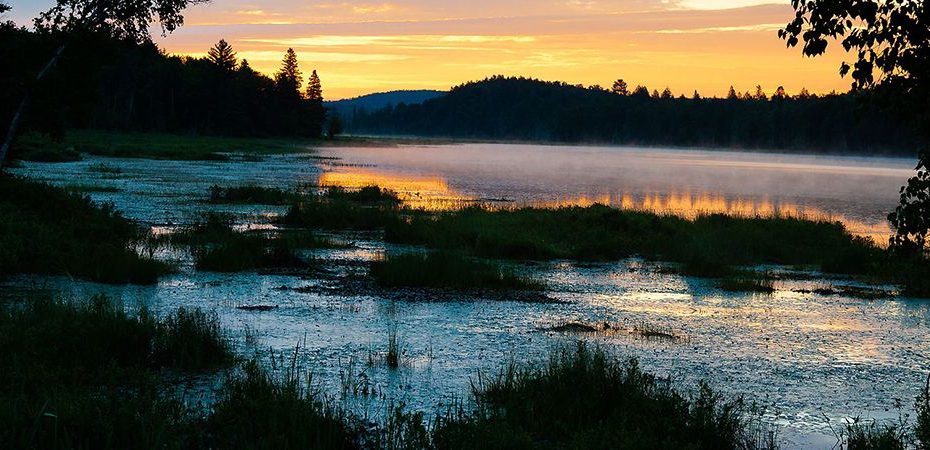The conversation around protected areas is evolving in response to the challenge of protecting 30% of Canada’s lands and waters by 2030. What protected areas traditionally have been, and what they can be, encompass many forms. At Ontario Nature, we’re learning from the successes – and mistakes – of the past in our current work, and excited about the possibilities of the future.
Ontario’s History of Protected Areas
In Ontario, protected areas started out simply as national and provincial parks. As families could afford to take camping vacations, more parks were established, with campgrounds, beaches and other family-friendly amenities. Then, as environmental consciousness grew through the 1970s and 1980s, planning for protected areas shifted to protecting ecologically valuable areas.
Algonquin Provincial Park © Bill McDonald
Large scale land use planning exercises established thousands of hectares of new protected areas to make land use decisions that resolved conflicts between resource extraction industries and environmental interests. However, the way protected areas were set aside didn’t respect Indigenous Peoples. To create people-free “wilderness” areas the Indigenous Peoples who cared for these lands since time immemorial were displaced and barred from using them.
Over time, the process of creating land use planning for protected areas got better at considering Indigenous rights and interests. The 2006 Keeping the Land strategy for the Whitefeather Forest involved a collaborative approach to deciding which areas should be protected, and how. Likewise, the negotiations with the Algonquins of Ontario have led to more collaborative decision-making for new protected areas.
Leeders Creek © Don Ross, Thousand Islands Watershed Land Trust
Current Protected Area Efforts
In Ontario, protected areas that meet international standards are now being established and managed by governments, environmental groups, Indigenous communities and other environmental leaders through a range of approaches.
Non-governmental groups, such as land trusts, are creating their own unique protected areas. Ontario Nature’s own system of nature reserves count in the tally towards the 30 by 30 target. Municipalities are also playing an important role in protecting urban nature.
Interior © Point Grondine Park
Since the 1990s, multiple protected areas have been established and are co-managed through collaborations between government and local Indigenous communities. One example is Thaidene Nëné National Park Reserve in the Northwest Territories which is jointly managed by provincial and federal government, and Łutsël K’é Dene First Nation.
In Ontario, Point Grondine Park is a backcountry wilderness park, solely owned and governed by the Wiikwemkoong First Nation. Many Nations are also self-declaring Indigenous Protected and Conserved Areas on their traditional territories in accordance with Indigenous law, including Asubpeeschoseewagong First Nation in northern Ontario. The level of formal recognition of and respect for these areas by governments varies.
Kingfisher Lake, FSC Designated Conservation Land candidate site © Kristen Setala
The Possibilities for the Future in Ontario
Our current work with FSC certified forests shows that forest industry leaders can play a valuable role in identifying potential protected areas using the best of western science while respecting the rights and interests of Indigenous communities.
In February, the federal government and nine First Nations announced that they are moving forward with negotiations for a marine conservation area spanning roughly 86,000 square kilometres across southern Hudson Bay and western James Bay. The next steps will be focused on extending protection 20 kilometres inland to include the carbon-rich peatlands that are under provincial jurisdiction.
We hope that these examples tell a story of possibilities for the future of protected areas in Ontario. There’s an opportunity for the province to support a new vision of protected areas. Is it up for the challenge?
Authors
Corina Brdar is the Conservation Policy and Planning Manager at Ontario Nature
Brittney Vezina is the Protected Places Project Coordinator at Ontario Nature
Resources
The post The Past, Present and Future of Protected Areas in Ontario appeared first on Ontario Nature.
